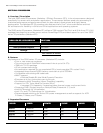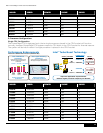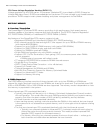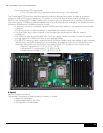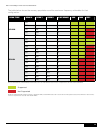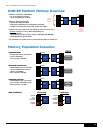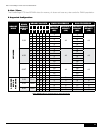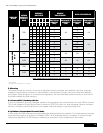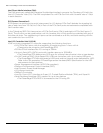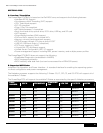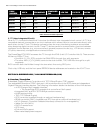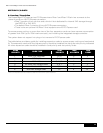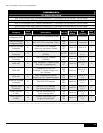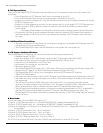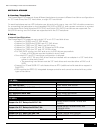
Dell™ PowerEdge™ R710 Technical Guidebook
29
SECTION 8. CHIPSET
A. Overview / Description
The PowerEdge R710 planar incorporated the Intel 5520 chipset (code named Tylersburg) for I/O and
processor interfacing. Tylersburg is designed to support Intel's 5500 series processors (code named
Nehalem-EP),QPIinterconnect,DDR3memorytechnology,andPCIExpressGeneration2.The
TylersburgchipsetconsistsoftheTylersburg-36DIOHandICH9.
The Intel 5520 chipset (code named Tylersburg) I/O Hub (IOH)
The planar uses the The Intel
®
5520 chipset (code named Tylersburg) I/O Hub (IOH)-36D IOH to provide
alinkbetweenthe5500series2Sprocessor(NehalemEP)andI/Ocomponents.Themaincomponents
of the IOH consist of two full-width QuickPath Interconnect links (one to each processor), 36 lanes of
PCI Express Gen2, a x4 Direct Media Interface (DMI), and an integrated IOxAPIC.
IOH QuickPath Interconnect (QPI)
The QuickPath Architecture consists of serial point-to-point interconnects for the processors and the
IOH. The PowerEdge R710 has a total of three QuickPath Interconnect (QPI) links: one link connecting
the processors and links connecting both processors with the IOH. Each link consists of 20 lanes
(full-width) in each direction with a link speed of up to 6.4 GT/s. An additional lane is reserved for a
forwarded clock. Data is sent over the QPI links as packets.
The QuickPath Architecture implemented in the IOH and CPUs features four layers. The Physical layer
consists of the actual connection between components. It supports Polarity Inversion and Lane Reversal
for optimizing component placement and routing. The Link layer is responsible for flow control and the
reliable transmission of data. The Routing layer is responsible for the routing of QPI data packets. Finally,
the Protocol layer is responsible for high-level protocol communications, including the implementation of
a MESIF (Modify, Exclusive, Shared, Invalid, Forward) cache coherence protocol.



